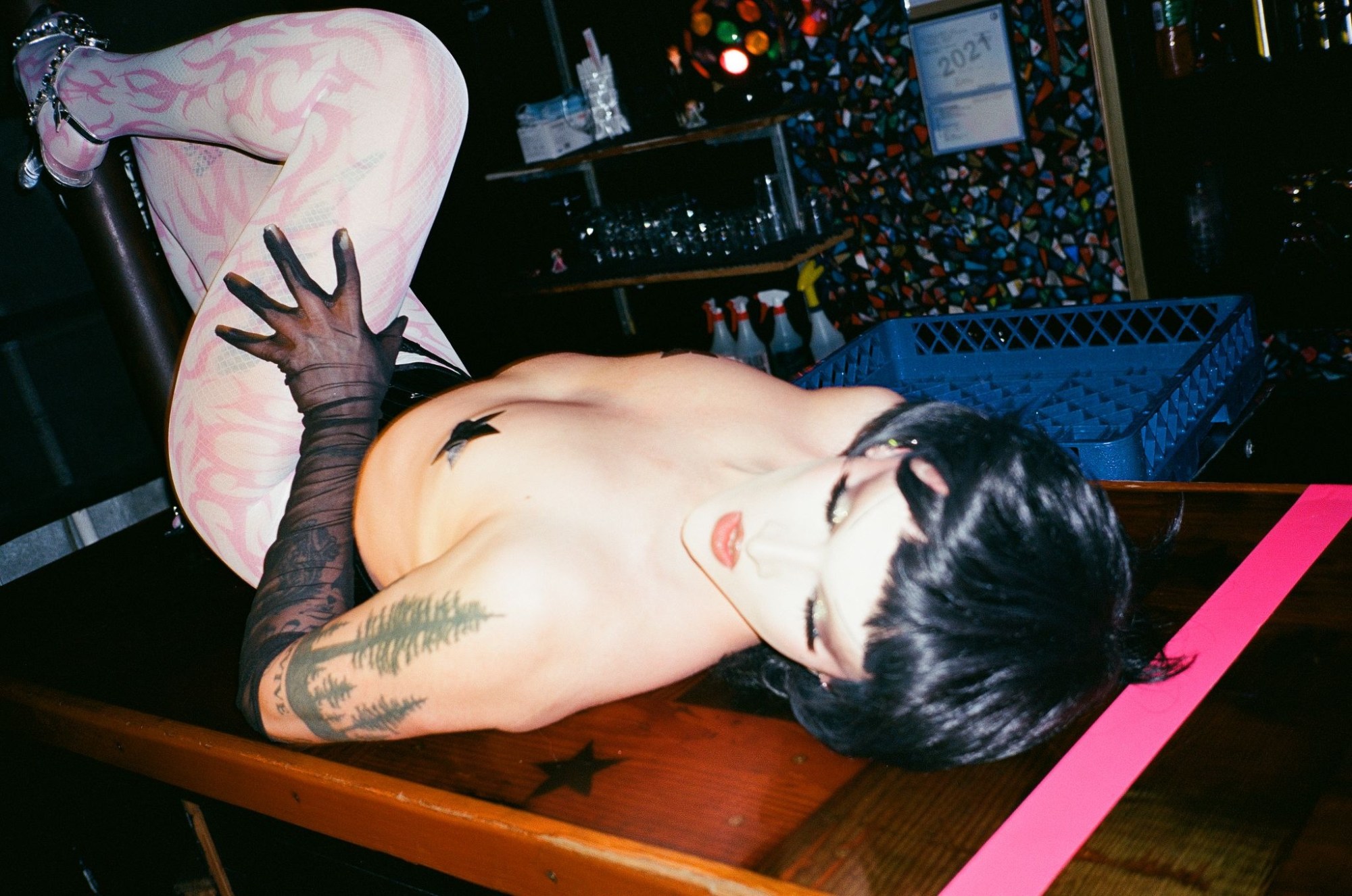In his new book Wanda Terrace, photographer Leobardo Bañuelos Jr. documents a segment of the ever-blossoming drag scene in Seattle, WA as it re-emerged post-pandemic from Zoom sessions and Instagram lives and back onto the stage, where it belonged. As queens like Bosco and Irene DuBois bring the national spotlight to the Emerald City by way of RuPaul’s Drag Race, Seattle’s debaucherous and irreverent take on the art form is primed to come — at long last — into full view.
“I wanted to put a stamp on this time period of Seattle drag,” Leobardo explains. “Social media is really cool, but temporary and short-lived. I wanted to create something tangible and physical for people to actually hold and reference without having to scroll through a feed.”
For the past two years, Leobardo could be found either backstage or in the audiences at drag performances and pageants, snapping pictures of local queens winning crowns and collecting tips from their adoring fans. He also set up photoshoots with drag performers in locations around the city, concentrating the shoots in Capitol Hill, the epicentre of Seattle drag nightlife.
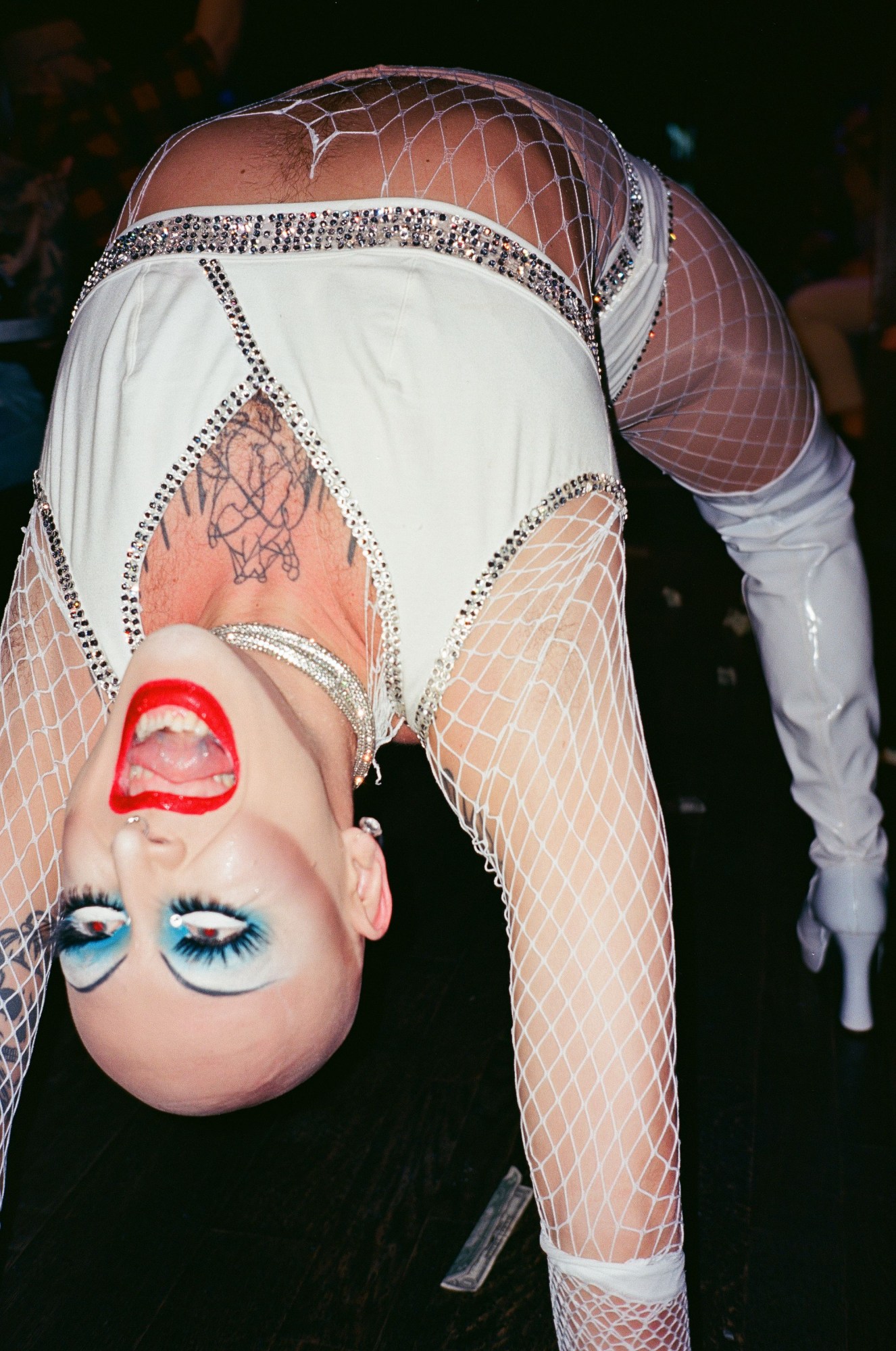
The resulting photos are dynamic and dreamy. Some capture the personality, the essence of the queens themselves. The glamorously Monday Mourning, balancing an unlit cig in her mouth as she fills up her gas tank. Kylie Mooncakes sitting astride a motorbike, perfectly perched in the chromatic light. The frenetic energy of being at a drag show; queens caught mid-performance with their arms outstretched almost beckoning you to them.
“It’s experimental, it’s alternative, it’s definitely fashion-focused,” Leobardo says of the drag scene. “Everybody specializes in different things and has their own story and demographic of people they bring to shows.”
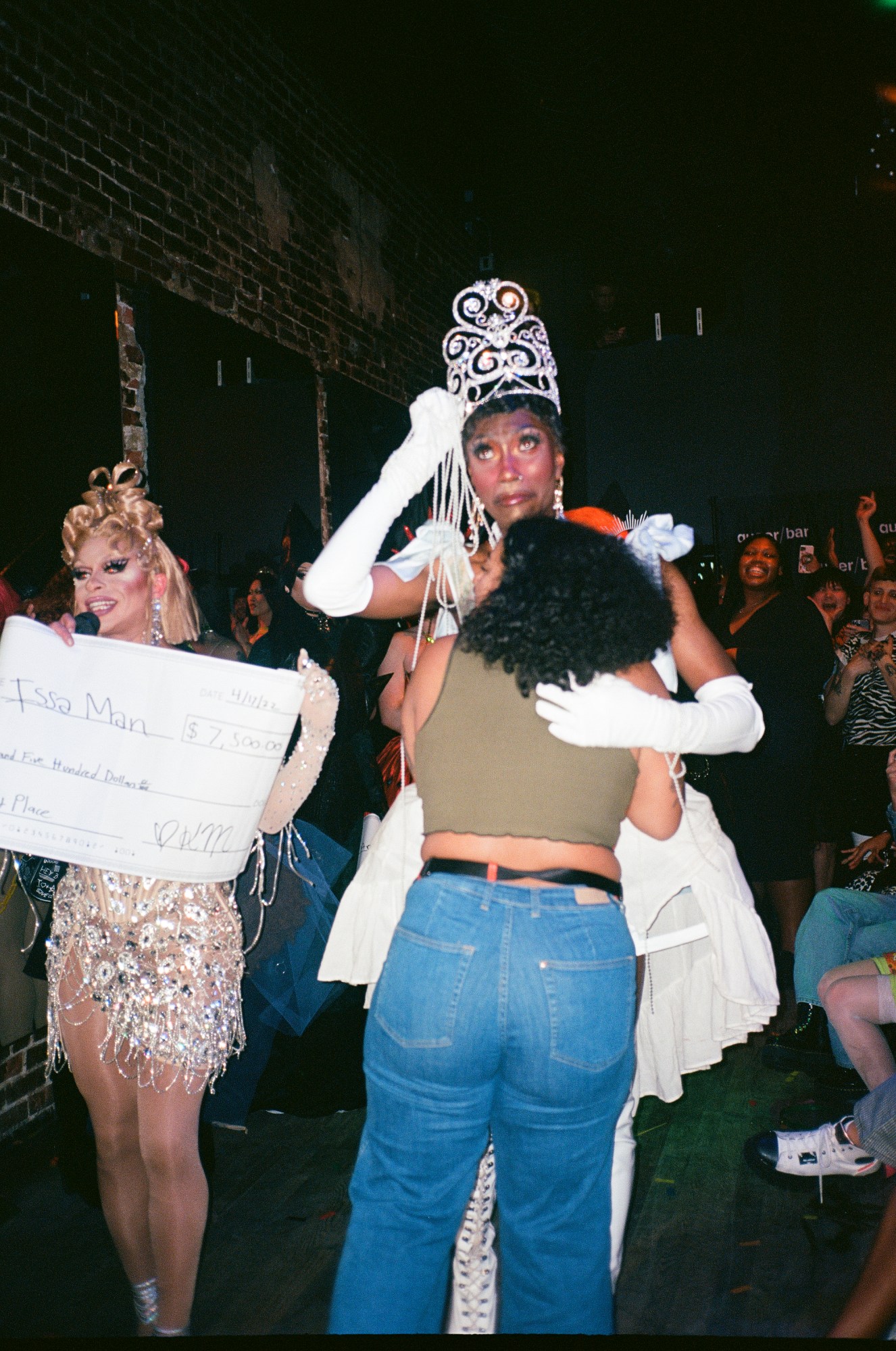
What emerges from Wanda Terrace is an intimate, personal portrait of that diverse drag scene, captured in all its chaotic, unhinged glory. Here, Leobardo explains what inspired him and how he put the book together.
Subscribe to i-D NEWSFLASH. A weekly newsletter delivered to your inbox on Fridays.
How did you get into photography?
There was one particular skate trip I went on in 2014 where one of my friends had a Pentax K1000 with him. The whole time he was taking photos, I didn’t really think much of it. But when the photos came out, I was like, whoa — that camera’s a lot nicer than I thought and those photos came out so good. The fact that my friend had captured those moments of the trip that wouldn’t have been captured otherwise inspired me. A few years later, in 2017, is when I actually took the jump and started taking photos.
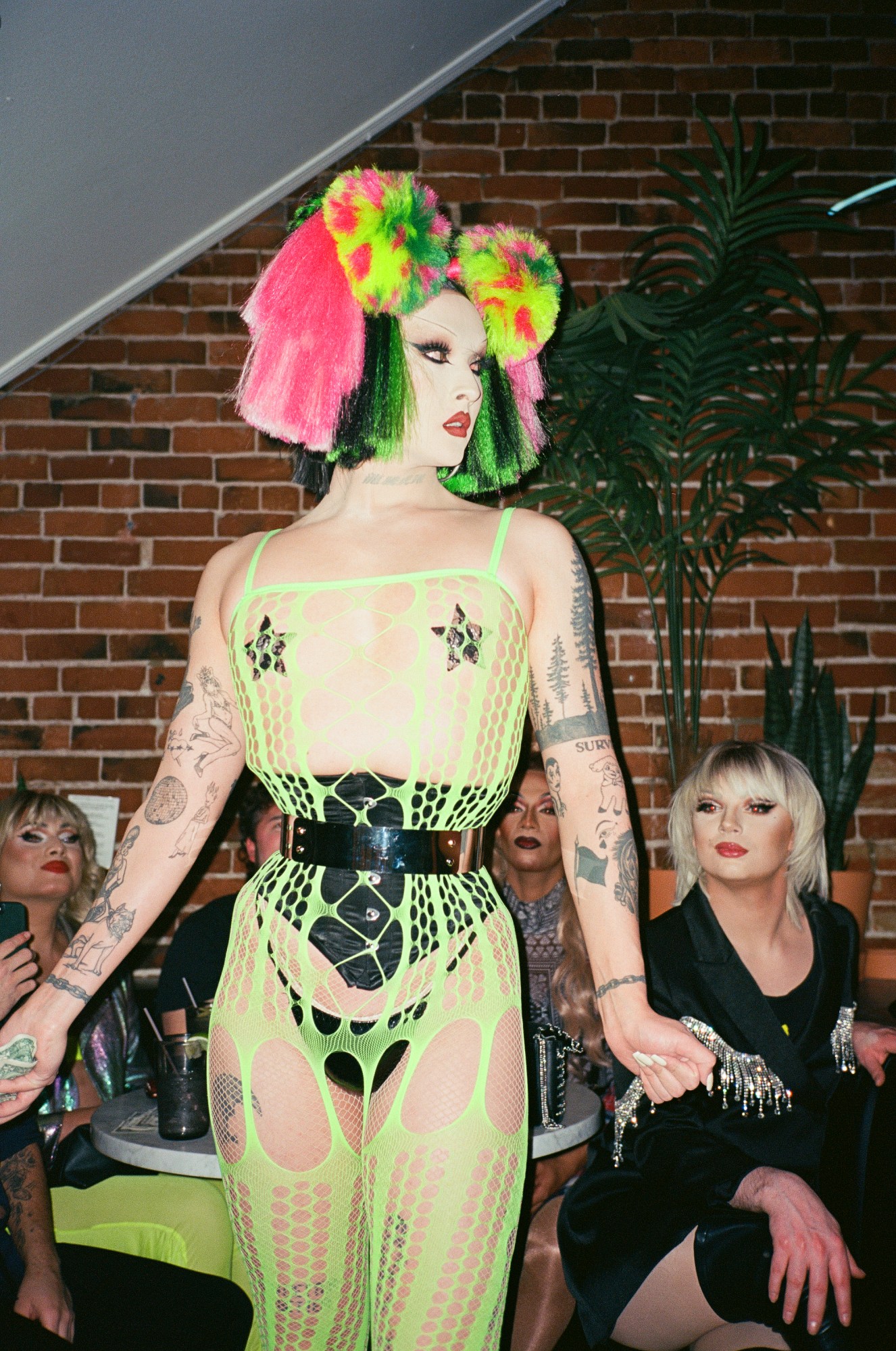
What sparked your interest in documenting Seattle’s drag community?
I would say being in it helped a lot, but definitely [drag performer] Hoochie Papa, my ex-boyfriend. I feel like without him I probably would not have gone to a drag show at the time that I did, I would not have known about drag if it wasn’t for him. So Hoochie bringing me to drag shows, introducing me to the scene, and being in the green room so often. I just started snapping photos casually. That’s when the idea to document them more in depth came about.
Were there any specific qualities about the Seattle scene that were particularly interesting to you?
I think there are a lot of similarities between the skateboarding community and the drag community. There’s all kinds of different skateboarders who skate a different way, who might dress a certain way and fall into these boxes. When I was going to drag shows and hanging out in the green room and seeing all these different kinds of queens, I realized the social dynamics of drag are similar to that of skateboarding; everyone’s your sister when they see you, but when you leave the room, they’re like ugh.
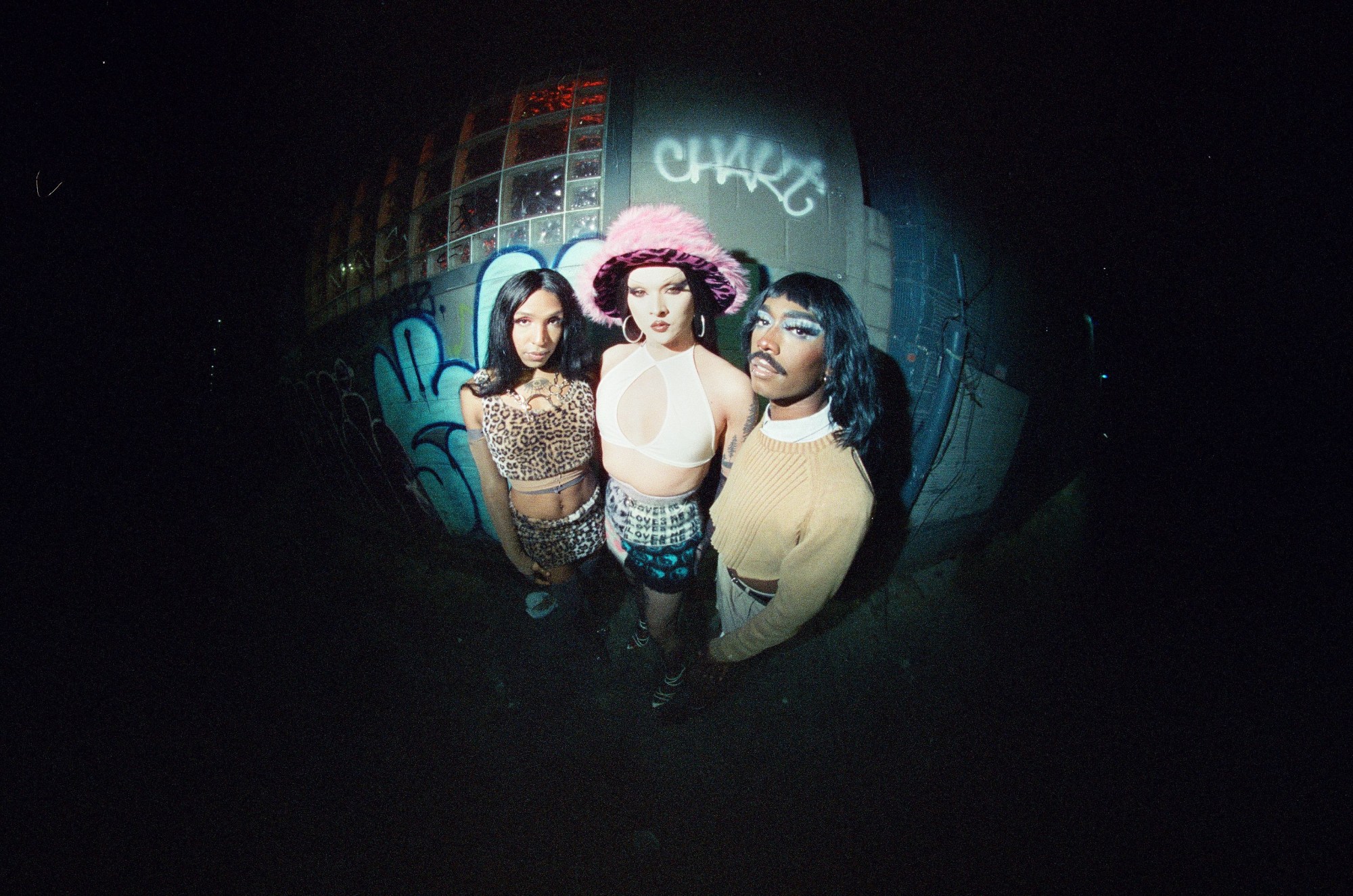
How much of this project was a collaborative effort between you and the queens?
Initially, when I started planning the book before the pandemic, I only wanted ten drag performers. I wanted it to be a very limited, intimate, collaborative shoot. Then the pandemic hit and that kind of changed things up. I did meet with almost ten performers where they got into drag for the photoshoot specifically. During that time I also started randomly shooting photos at shows. I didn’t even necessarily plan on shooting them, I just saw them there and was like, wow, you look incredible, the setting is incredible, the lighting is good. I have to shoot a photo.
What are some of your favorite photos from the project?
The back cover of the book of Monday [Mourning]. That was almost the front cover and it’s probably my favorite one because she looks scarily beautiful. There’s also a photo of Cucci in a business suit. There’s this red glow around her and she’s supposed to be Jeff Bezos for Halloween. That photo I love because of the red aura that’s around her. Rowan [Ruthless] had some really cool ones. It looked like smoke was creating these images in a way, but it’s really just light and slow speed.

There’s a mix of blurry photos from performances and then more formal shoots. After you shot everything and began to put the book together, what were you thinking about in terms of how to tell the story of the past two years?
A lot of the shots are clean portraits, they’re intimate, they’re sharp, you can see everything. So there was this similar formula going on throughout the book that was just face, face, face, face, face. Even if the face was composed a little bit differently in each one or placed somewhere else, it still read the same. So having those performance photos and those ethereal photos of the drag queens just outta focus added color breaks. I used to work in produce and we used to set up the wet rack and my boss was always like, “Don’t put two greens next to each other, color break it with red peppers or something.” I thought about it that way with the book. It was about adding something that makes it not so linear.
What qualities did you think it was important to capture about each queen and the scene in general?
I wanted to capture the individuality in each performer and their impact in the scene. I think every performer in here — and there are so many more who were not included — each one has their own story and their own lore. I knew that flipping through each page, no matter who you were or what kind of drag or art you liked, you would find someone in here that you gravitate towards. Because there’s just such a diverse cast of folks in [Wanda Terrace]…
In a way, I selfishly wanted to capture these folks because I feel like a lot of them are going to do big things.
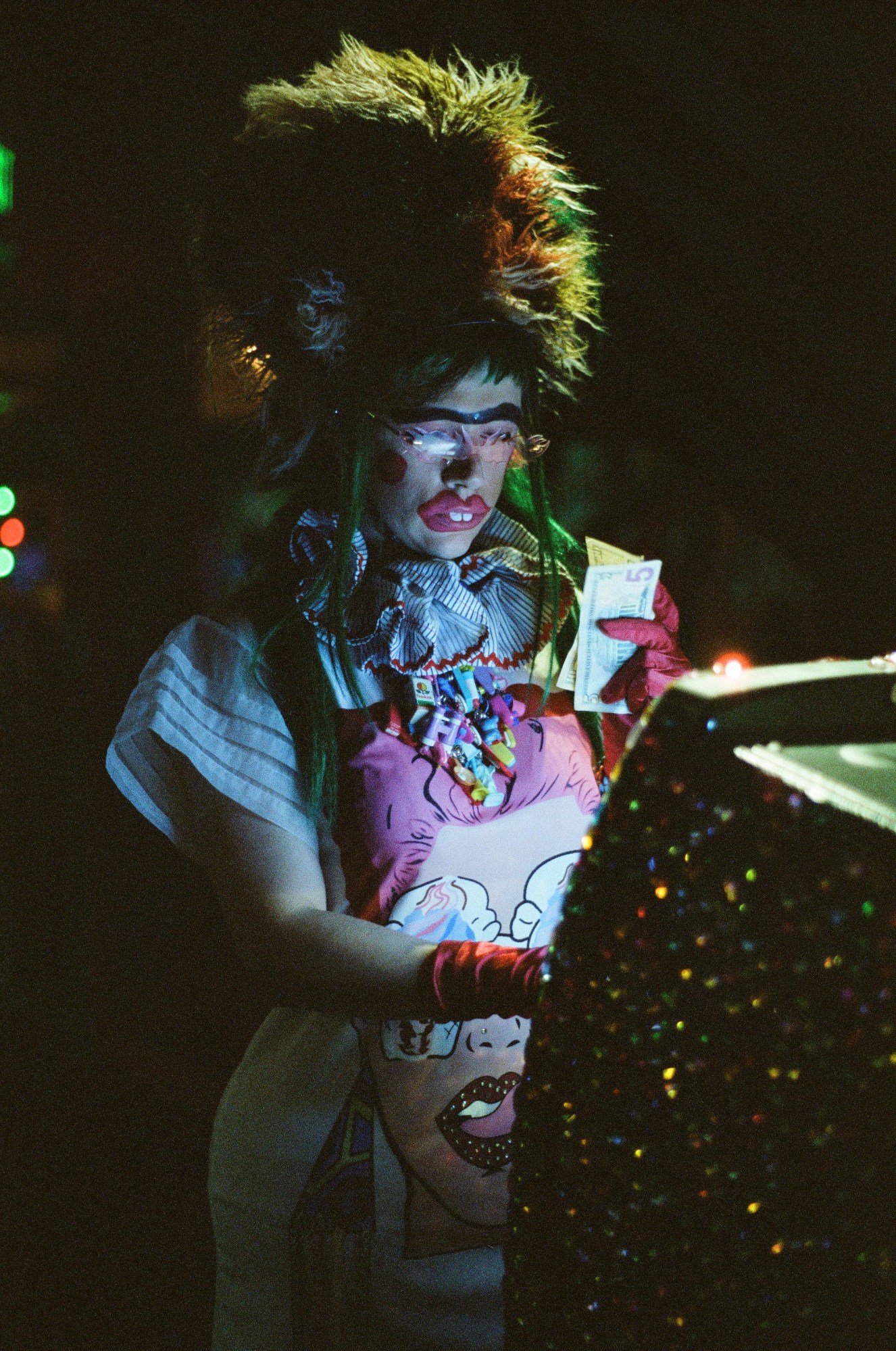
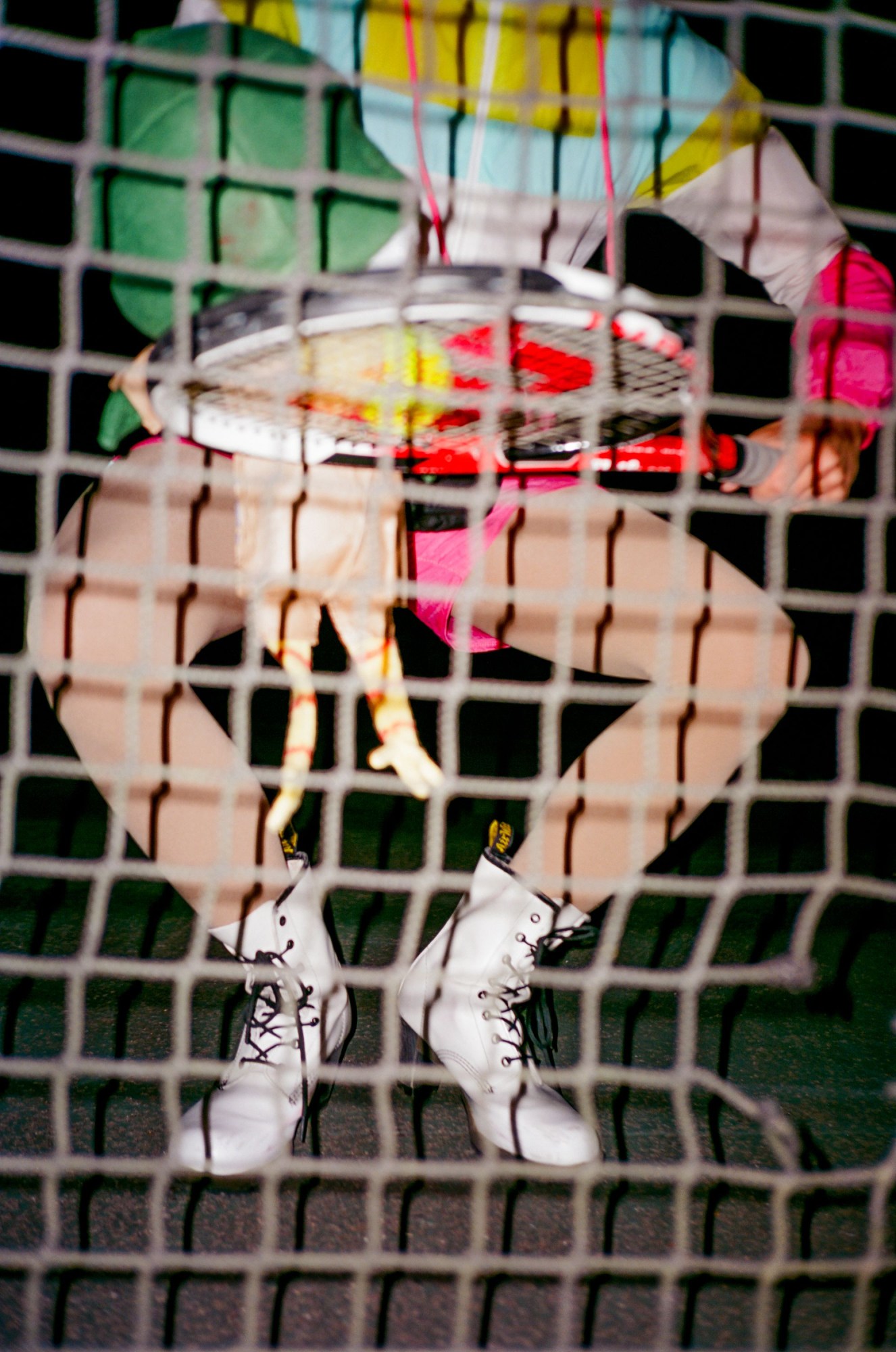
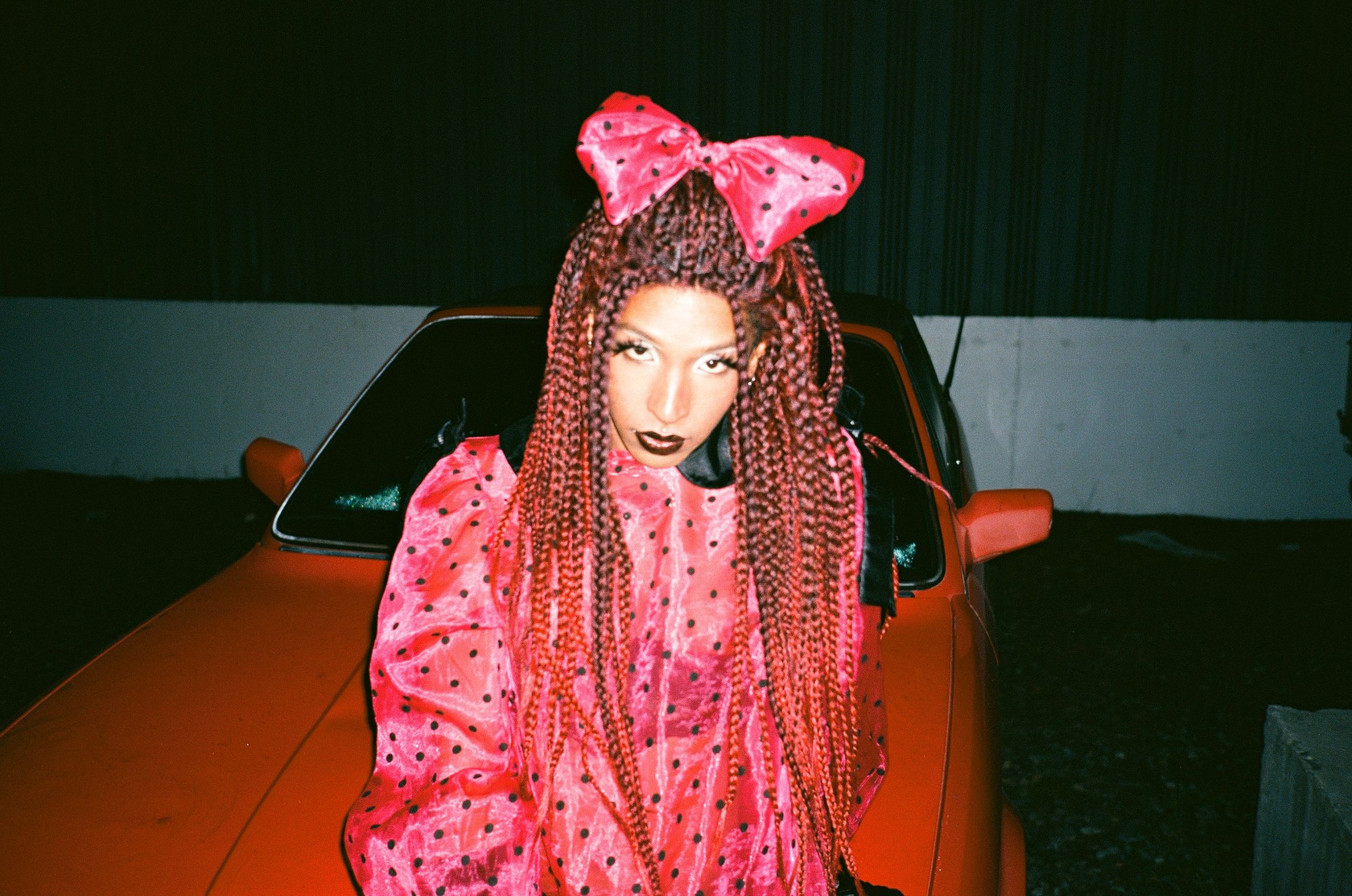


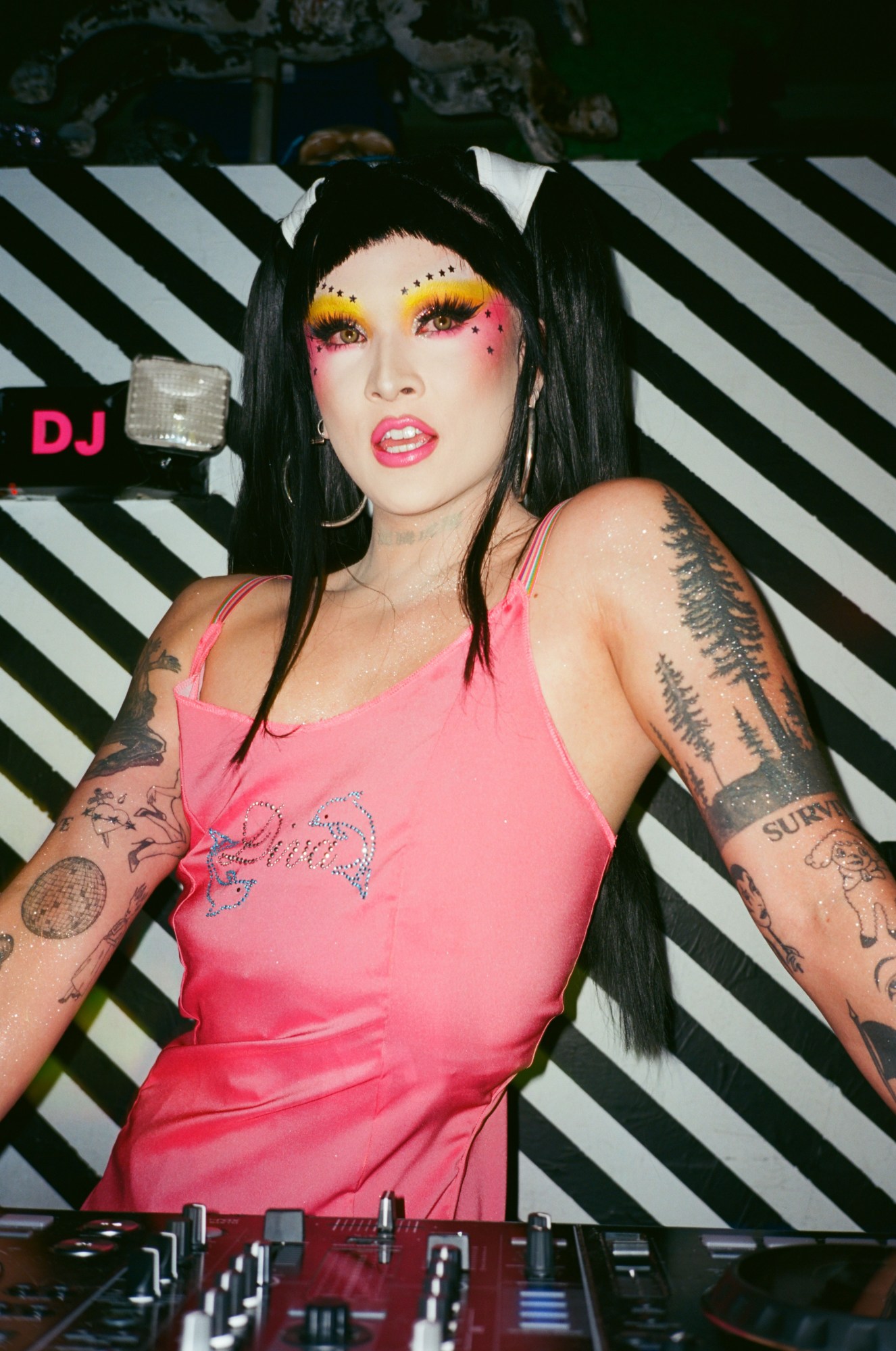

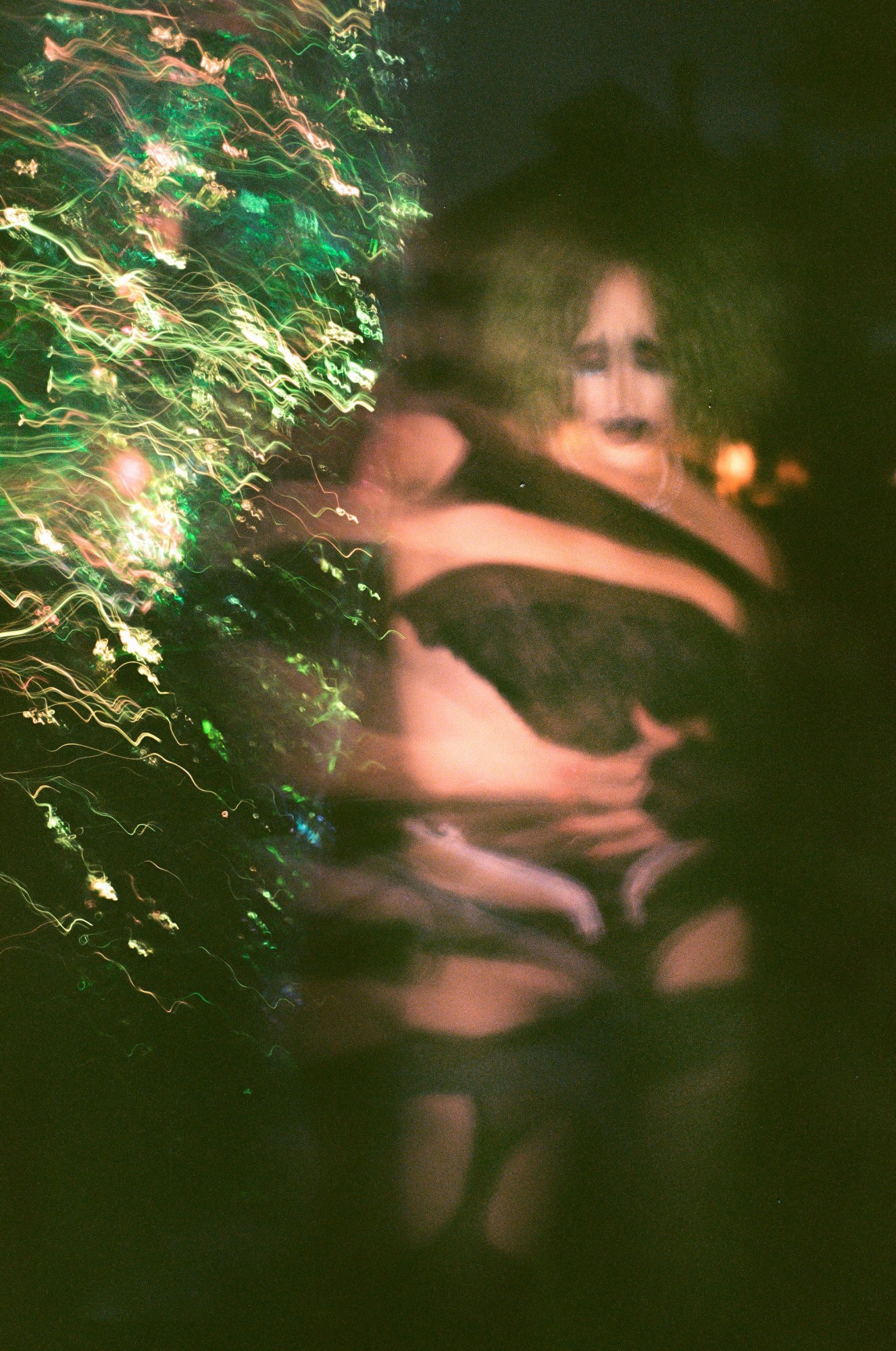
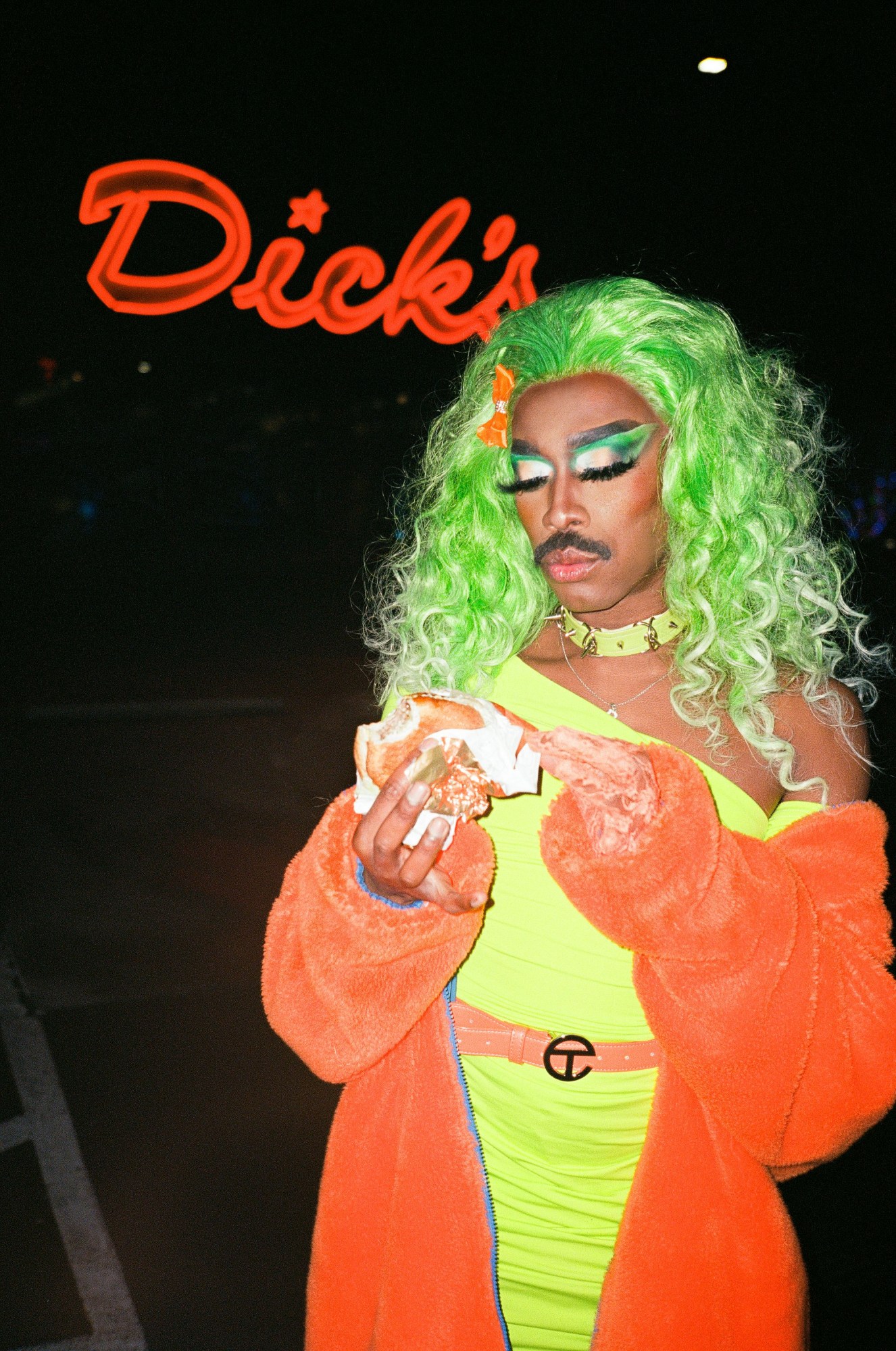

Credits
All imagery courtesy of Leobardo Bañuelos Jr
